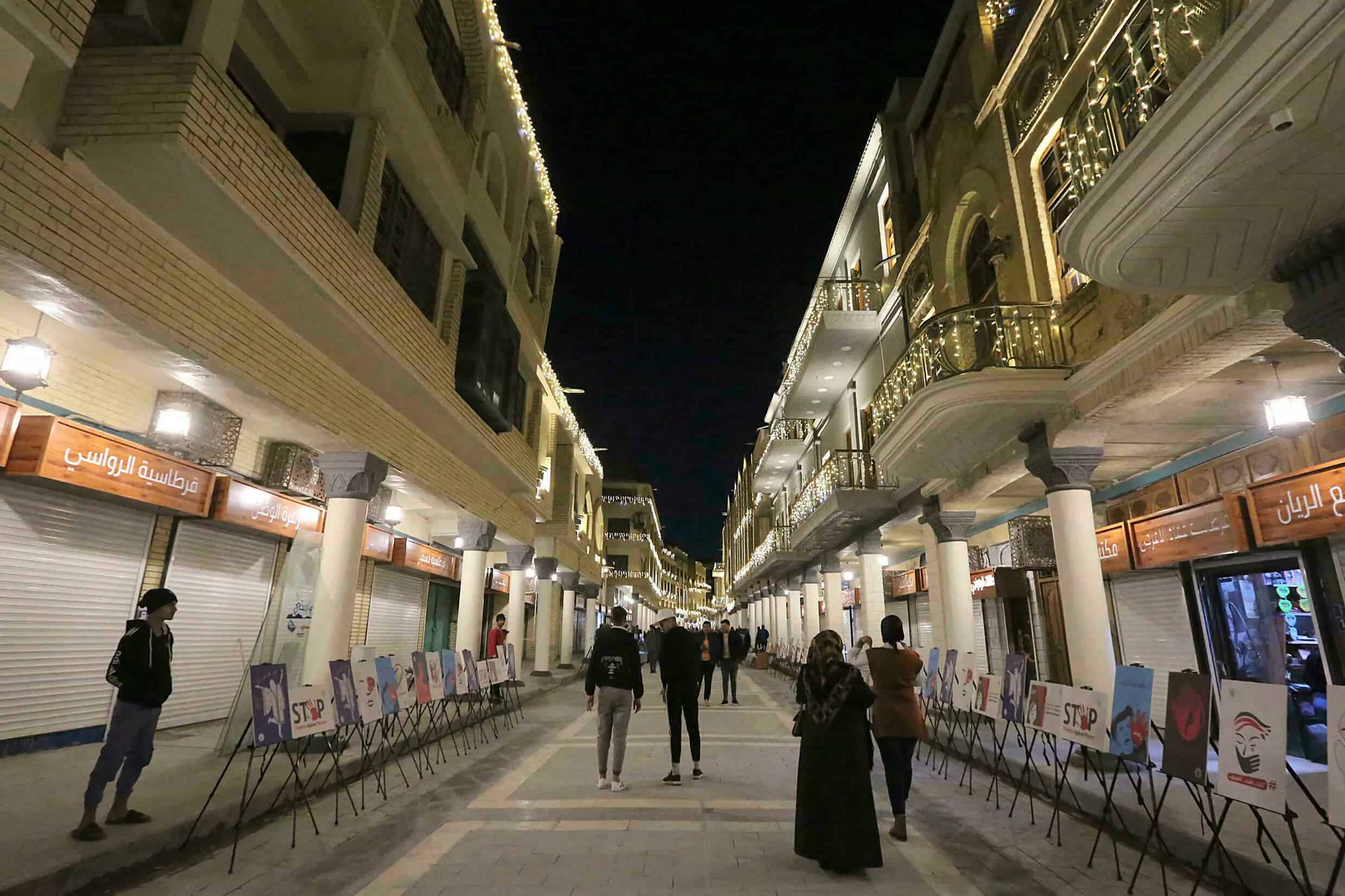Iraqi capital Baghdad on Saturday celebrated the renovation of the historic heart of its book trade, in the latest sign of an artistic renaissance after decades of conflict and strife.
In a city where explosions once could mean only one thing– violence– colorful fireworks lit up the sky during festivities organized by Baghdad municipality to inaugurate the renovated Al-Mutanabbi Street.
Its new look comes alongside art exhibitions, gallery openings, book fairs, and festivals reflecting a fledgling cultural renaissance, and recalling a golden age when Baghdad was considered one of the Arab world’s cultural capitals.
Al-Mutanabbi Street was first inaugurated in 1932 by King Faisal I and named after the celebrated 10th-century poet Abul Tayeb al-Mutanabbi, who was born under the Abbasid dynasty in what would become modern-day Iraq.
A narrow street in the heart of old Baghdad, Al-Mutanabbi has long drawn students and young people, usually on Fridays. But it is also frequented by intellectuals and older bibliophiles.
Normality still hangs by a thread in the Iraqi capital, where rocket and drone attacks sometimes target its highly fortified Green Zone, and where a July suicide attack on a market killed more than 30 people.
There was high security for the costumed performers and musicians who performed along the car-free road of new cobblestones.
The road is lined with shops, freshly-painted and sparkling, but most were closed. Fairy lights garlanded the ornate brick facades and wrought iron balconies.
‘Islet of beauty’
“Since the 1960s, I would come here every week to look at the books on the stalls and to meet friends,” veteran journalist and writer Zoheir al-Jazairi told AFP, delighting over the street’s latest transformation.
“It’s an islet of beauty in the heart of Baghdad. You notice the difference compared to the rest of the city,” he said, lamenting the often neglected heritage of the capital.
Stretching for just under one kilometer (0.6 miles), the street begins with a statue of its namesake overlooking the Tigris River and ends with an arch adorned with the poet’s quotes.
Visitors can find Arabic translations of American best-sellers side-by-side with textbooks.
There are titles in an array of languages, and every once in a while a hidden treasure can be found nestled between the selections.
Years of sectarian violence followed the 2003 US-led invasion that toppled Iraq’s former dictator Saddam Hussein.
Iraq is trying to recover from its years of violence but remains hobbled by political divisions, corruption and poverty.
Even Al-Mutanabbi Street, a center of intellectual life with its cafes and books, could not escape the past violence.
In March 2007, a suicide car bomb killed 30 people and wounded 60 others there.
Mohamed Adnan, 28, took over a bookshop from his father, who died in the blast.
“He was killed, our neighbors too and several others who are dear to us,” said the history graduate, welcoming the renovation.
“I wish those who left were alive to see how the street has transformed,” he said.
On the banks of the Tigris a singer hummed traditional ballads, beneath the fireworks.








